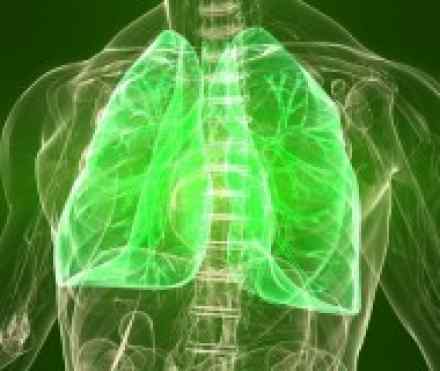
What is it?
Pulmonary oedema is a condition caused by excess fluid in the lungs. This fluid collects in the numerous air sacs in the lungs, making it difficult to breathe.
In most cases, heart problems cause pulmonary oedema. But fluid can accumulate for other reasons, including pneumonia, exposure to certain toxins and medications, and exercising or living at high elevations.
Pulmonary oedema that develops suddenly (acute) is a medical emergency requiring immediate care. Although pulmonary oedema can sometimes prove fatal, the outlook may be good when you receive prompt treatment for pulmonary oedema along with treatment for the underlying problem. Treatment for pulmonary edema varies depending on the cause, but generally includes supplemental oxygen and medications.
Symptoms
Depending on the cause, pulmonary edema symptoms may appear suddenly or develop slowly.
Signs and symptoms that come on suddenly may include:
- Extreme shortness of breath or difficulty breathing
- A feeling of suffocating or drowning
- Wheezing or gasping for breath
- Anxiety, restlessness or a sense of apprehension
- A cough that produces frothy sputum that may be tinged with blood
- Excessive sweating
- Pale skin
- Chest pain, if pulmonary edema is caused by heart disease
- A rapid, irregular heartbeat (palpitations)
If you develop any of these signs or symptoms, call 999 or emergency medical assistance right away. Pulmonary oedema can be fatal if not treated.
Signs and symptoms that develop more gradually, often due to heart failure, include:
- Having more shortness of breath than normal when you're physically active.
- Difficulty breathing with exertion, often when you're lying flat as opposed to sitting up.
- Awakening at night with a breathless feeling that may be relieved by sitting up.
- Rapid weight gain when pulmonary oedema develops as a result of congestive heart failure, a condition in which your heart pumps too little blood to meet your body's needs. The weight gain is from accumulation of fluid in your body, especially in your legs.
- Loss of appetite.
- Fatigue.
Signs and symptoms of pulmonary edema caused by high-altitude generally include:
Causes
Your lungs contain numerous small, elastic air sacs called alveoli. With each breath, these air sacs take in oxygen and release carbon dioxide. Normally, the exchange of gases takes place without problems.
But in certain circumstances, the alveoli fill with fluid instead of air, preventing oxygen from being absorbed into your bloodstream. A number of things can cause fluid to accumulate in your lungs, but most have to do with your heart (cardiac pulmonary edema). Understanding the relationship between your heart and lungs can help explain why.
How your heart works
Your heart is composed of two upper and two lower chambers. The upper chambers (the right and left atria) receive incoming blood and pump it into the lower chambers. The lower chambers, the more muscular right and left ventricles, pump blood out of your heart. The heart valves — which keep blood flowing in the correct direction — are gates at the chamber openings.
Normally, deoxygenated blood from all over your body enters the right atrium and flows into the right ventricle, where it's pumped through large blood vessels (pulmonary arteries) to your lungs. There, the blood releases carbon dioxide and picks up oxygen. The oxygen-rich blood then returns to the left atrium through the pulmonary veins, flows through the mitral valve into the left ventricle, and finally leaves your heart through another large artery, the aorta. The aortic valve at the base of the aorta keeps the blood from flowing backward into your heart. From the aorta, the blood travels to the rest of your body.
What goes wrong
Cardiac pulmonary oedema — also known as congestive heart failure — occurs when the diseased or overworked left ventricle isn't able to pump out enough of the blood it receives from your lungs. As a result, pressure increases inside the left atrium and then in the pulmonary veins and capillaries, causing fluid to be pushed through the capillary walls into the air sacs.
Congestive heart failure can also occur when the right ventricle is unable to overcome increased pressure in the pulmonary artery, which usually results from left heart failure, chronic lung disease or high blood pressure in the pulmonary artery (pulmonary hypertension).
Medical conditions that can cause the left ventricle to become weak and eventually fail include:
- Coronary artery disease. Over time, the arteries that supply blood to your heart can become narrow from fatty deposits (plaques). A heart attack occurs when a blood clot forms in one of these narrowed arteries, blocking blood flow and damaging the portion of your heart muscle supplied by that artery. The result is that the damaged heart muscle can no longer pump as well as it should. Although the rest of your heart tries to compensate for this loss, either it's unable to do so effectively or it's weakened by the extra workload. When the pumping action of your heart is weakened, blood backs up into your lungs, forcing fluid in your blood to pass through the capillary walls into the air sacs.
- Cardiomyopathy. When your heart muscle is damaged by causes other than blood flow problems, the condition is called cardiomyopathy. Often, cardiomyopathy has no known cause, although it sometimes runs in families. Less common causes include viral infections (myocarditis), alcohol abuse and the toxic effects of drugs such as heroin and some types of chemotherapy. Because cardiomyopathy weakens the left ventricle — your heart's main pump — your heart may not be able to respond to conditions that require it to work harder, such as a surge in blood pressure, a faster heartbeat with exertion or excess salt consumption that causes water retention or infections. When the left ventricle can't keep up with the demands placed on it, fluid backs up into your lungs.
- Heart valve problems. In mitral valve disease or aortic valve disease, the valves that regulate blood flow in the left side of your heart either don't open wide enough (stenosis) or don't close completely (insufficiency). This allows blood to flow backward through the valve. When the valves are narrowed, blood can't flow freely into your heart and pressure in the left ventricle builds up, causing the left ventricle to work harder and harder with each contraction. The left ventricle also dilates to allow more blood flow, but this makes the left ventricle's pumping action less efficient. Because it's working so much harder, the left ventricle eventually thickens, which puts greater stress on the coronary arteries. The increased pressure extends into the left atrium and then to the pulmonary veins, causing fluid to accumulate in your lungs. On the other hand, if the mitral valve leaks, some blood is backwashed toward your lung each time your heart pumps. If the leakage develops suddenly, you may develop sudden and severe pulmonary edema.
- High blood pressure (hypertension). Untreated or uncontrolled high blood pressure causes a thickening of the left ventricular muscle, and worsen coronary artery disease.
Noncardiac pulmonary oedema
Not all pulmonary edema is the result of heart disease. Fluid may also leak from the capillaries in your lungs' air sacs because the capillaries themselves become more permeable or leaky, even without the buildup of back pressure from your heart. In that case, the condition is known as noncardiac pulmonary edema because your heart isn't the cause of the problem. Some factors that can cause noncardiac pulmonary edema are:
- Lung infections. When pulmonary edema results from lung infections, such as pneumonia, the edema occurs only in the part of your lung that's inflamed.
- Exposure to certain toxins. These include toxins you inhale — such as chlorine or ammonia — as well as those that may circulate within your own body, for example, if you inhale some of your stomach contents when you vomit.
- Kidney disease. When your kidneys can't remove waste effectively, excess fluid can build up, causing pulmonary oedema.
- Smoke inhalation. Smoke from a fire contains chemicals that damage the membrane between the air sacs and the capillaries, allowing fluid to enter your lungs.
- Adverse drug reaction. Many drugs — ranging from illegal drugs such as heroin and cocaine to aspirin and chemotherapy drugs — are known to cause noncardiac pulmonary edema.
- Acute respiratory distress syndrome (ARDS). This serious disorder occurs when your lungs suddenly fill with fluid and inflammatory white blood cells. Many conditions can cause ARDS, including severe injuries (trauma), systemic infection (sepsis), pneumonia and shock.
- High altitudes. Mountain climbers and people who live in or travel to high-altitude locations run the risk of developing high-altitude pulmonary oedema (HAPE). This condition — which typically occurs at elevations above 8,000 feet (about 2,400 meters) — can also affect hikers or skiers who start exercising at higher altitudes without first becoming acclimated. But even people who have hiked or skied at high altitudes in the past aren't immune. Although the exact cause isn't completely understood, HAPE seems to develop as a result of increased pressure from constriction of the pulmonary capillaries. Without appropriate care, HAPE can be fatal.
Complications
If pulmonary edema continues, it can raise pressure in the pulmonary artery and eventually the right ventricle begins to fail. The right ventricle has a much thinner wall of muscle than does the left side. The increased pressure backs up into the right atrium and then into various parts of your body, where it can cause:
- Leg swelling (oedema)
- Abdominal swelling (ascites)
- Buildup of fluid in the membranes that surround your lungs (pleural effusion)
- Congestion and swelling of the liver
When not treated, acute pulmonary edema can be fatal. In some instances it may be fatal even if you receive treatment.
Diagnosis
Because pulmonary oedema requires prompt treatment, you'll initially be diagnosed on the basis of your symptoms and a physical exam and chest X-ray. You may also have blood drawn — usually from an artery in your wrist — so that it can be checked for the amount of oxygen and carbon dioxide it contains (arterial blood gas concentrations). Your blood will also be checked for levels of a substance called B-type natriuretic peptide (BNP). Increased levels of BNP may indicate that your pulmonary eodema is caused by heart problems. Other blood tests will usually be done, including tests of your kidney function, blood count, as well as tests to exclude a heart attack as the cause of your pulmonary oedema.
Once your condition is more stable, your doctor will ask about your medical history, especially whether you have ever had cardiovascular or lung disease.
Tests that may be done to diagnose pulmonary oedema or to determine why you developed fluid in your lungs include:
- X-ray. A chest X-ray will likely be the first test you have done to confirm the diagnosis of pulmonary oedema.
- Electrocardiography (ECG). This noninvasive test can reveal a wide range of information about your heart. During an ECG, patches attached to your skin receive electrical impulses from your heart. These are recorded in the form of waves on graph paper or a monitor. The wave patterns show your heart rate and rhythm, and whether areas of your heart show diminished blood flow.
- Echocardiography (diagnostic cardiac ultrasound exam). Another noninvasive test, echocardiography uses a wand-shaped device called a transducer to generate high-frequency sound waves that are reflected from the tissues of your heart. The sound waves are then sent to a machine that uses them to compose images of your heart on a monitor. The test can help diagnose a number of heart problems, including valve problems, abnormal motions of the ventricular walls, fluid around the heart (pericardial effusion) and congenital heart defects. It also accurately measures the amount of blood your left ventricle ejects with each heartbeat (ejection fraction, or EF). Although a low EF often indicates a cardiac cause for pulmonary edema, it's possible to have cardiac pulmonary edema with a normal EF.
- Transesophageal echocardiography (TEE). In a traditional cardiac ultrasound exam, the transducer remains outside your body on the chest wall. But in TEE, a soft, flexible tube with a special transducer tip is inserted through your mouth and into your oesophagus — the passage leading to your stomach. The oesophagus lies immediately behind your heart, which allows for a closer and more accurate picture of your heart and central pulmonary arteries. You'll be given a sedative to make you more comfortable and prevent gagging. You may have a sore throat for a few days after the procedure, and there's a slight risk of perforation or bleeding from the oesophagus.
- Pulmonary artery catheterization. If other tests don't reveal the reason for your pulmonary oedema, your doctor may suggest a procedure to measure the pressure in your lung capillaries (wedge pressure). During this test, a small, balloon-tipped catheter is inserted through a vein in your leg or arm into a pulmonary artery. The catheter has two openings connected to pressure transducers. The balloon is inflated and then deflated, giving pressure readings.
- Cardiac catheterization. If tests such as an ECG or echocardiography don't uncover the cause of your pulmonary oedema, or you also have chest pain, your doctor may suggest heart catheterization with coronary angiogram. During cardiac catheterization, a long thin tube called a catheter is inserted in an artery or vein in your groin, neck or arm and threaded through your blood vessels to your heart. If dye is injected during the test, it's referred to as a coronary angiogram. During this procedure, corrective action such as opening a blocked artery can be taken, which may quickly improve the pumping action of your left ventricle. Cardiac catheterization can also be used to measure the pressure in your heart chambers, assess your heart valves, and look for causes of pulmonary oedema.
References
http://www.mayoclinic.org/diseases-conditions/pulmonary-edema/basics/definition/con-20022485
http://emedicine.medscape.com/article/157452-overview
http://www.medicinenet.com/pulmonary_edema/article.htm
http://www.thelancet.com/journals/lancet/article/PIIS0140-6736(98)22006-X/abstract




